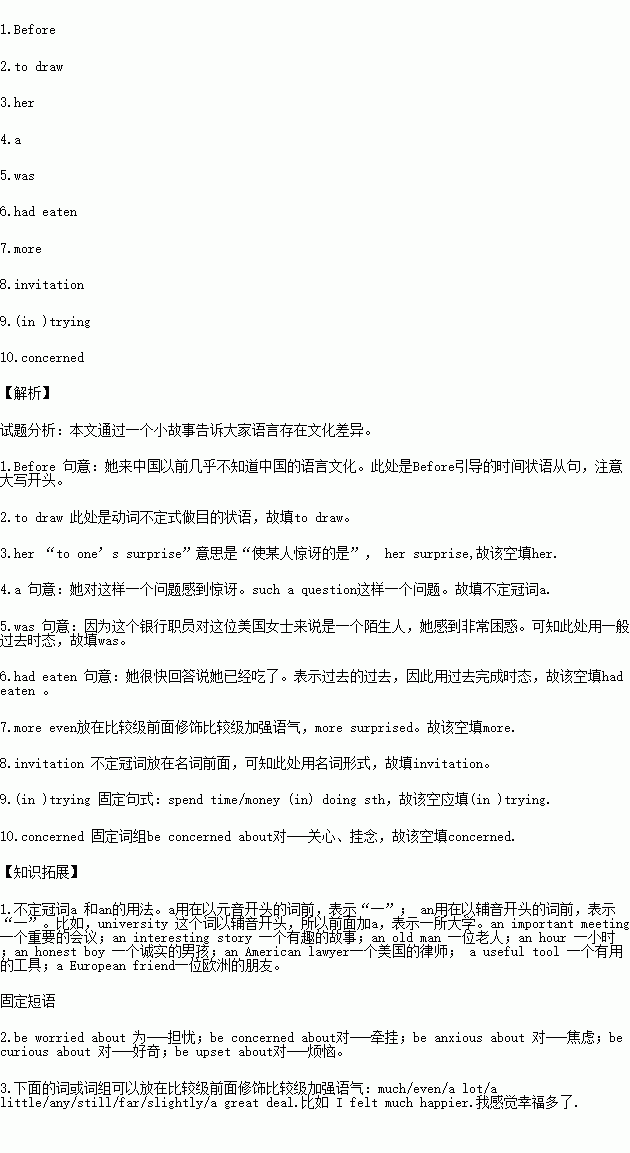题目内容
语法填空
阅读下面短文,按照句子结构的语法性和上下文连贯的要求,在空格处填入一个适当的词或使用括号中词语的正确形式填空,并将答案填写在标号为1-10的相应位置上。
A young American woman worked in a school in Shanghai. _________ she came to China,she knew little about the Chinese culture of language. One day on her way to school,she went to a bank _________ (draw) some money.To _________ surprise,the bank clerk(职员) asked her if she had had her lunch.She was surprised at such _________ question because in the American culture it would mean that the bank clerk is inviting her to lunch.Between unmarried young people it can also mean the young man’s interest in dating the girl.Since this bank clerk _________ a stranger to the American woman,she was very puzzled(困惑的),and quickly answered that she _________ (eat) already.After this she went on to school and was even _________ surprised when one of the teachers asked her the same question.
By now she understood that it could not be an _________ (invite) but was puzzled as to why they asked it.In the following days she was asked the same question again and again and she spent many hours _________ (try) to work out why so many people kept asking her this.At last she thought that these people must be _________ (concern) about her health.She was rather thin at the time,and she thought they must be worrying that she was not eating well!
In fact the question like that has no real meaning at all — it is only a greeting.
 天天向上一本好卷系列答案
天天向上一本好卷系列答案 小学生10分钟应用题系列答案
小学生10分钟应用题系列答案
